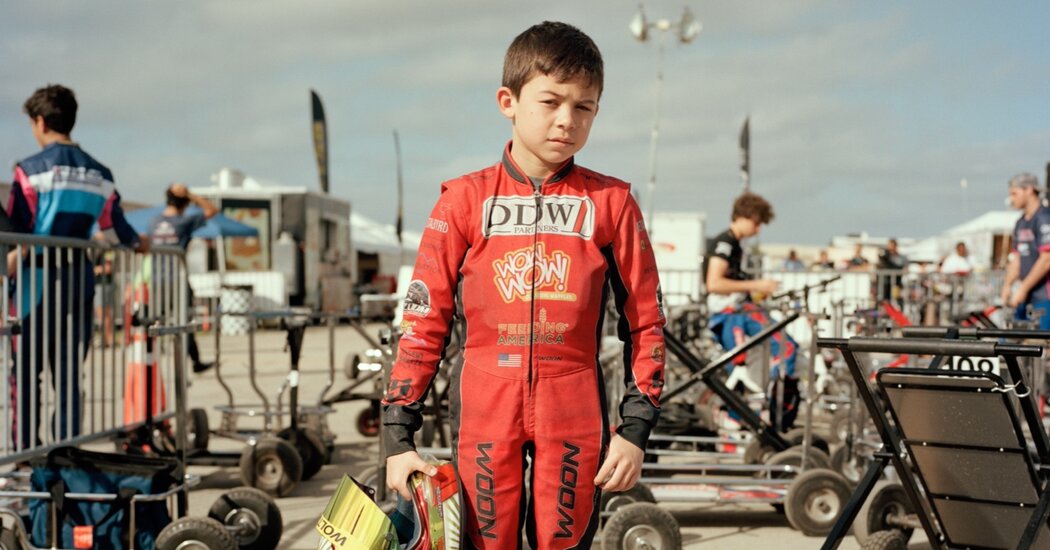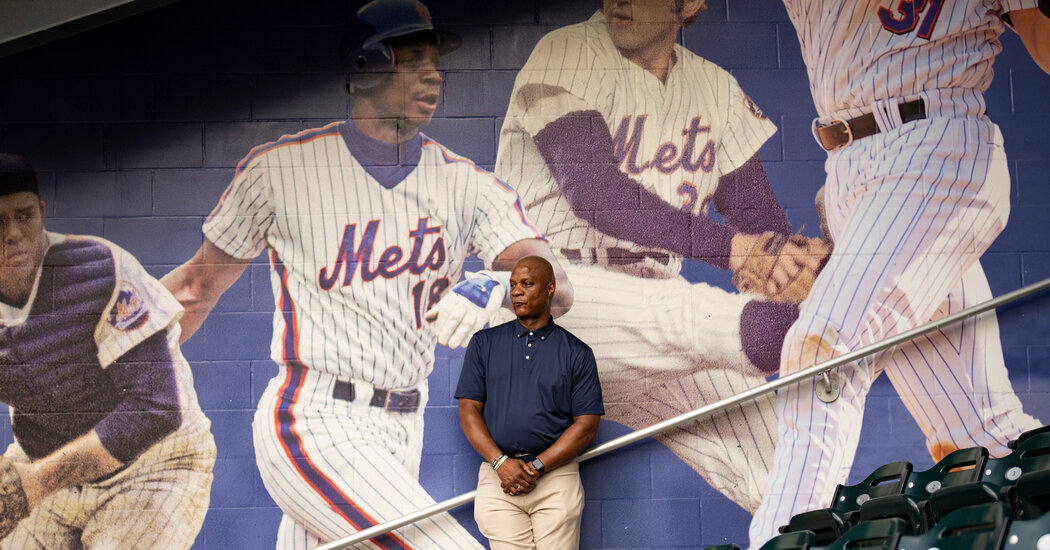This U.S. World Cup Team Is One for the Ages. All the Ages.
The story seemed like one Alex Morgan might tell around a campfire.
Back in the day, the 34-year-old Morgan likes to begin, when players like her needed to find their way to their soccer games, they used something called MapQuest. It wasn’t an app on your smartphone, the kind with a reassuring voice that announced each turn and flashed a digital dot to show your location.
It was a website, Morgan said, that generated a map and a list of step-by-step directions, which you had to print out on actual paper. Sometimes it fell to preteen kids like Morgan to read out the turns while a parent drove.
“That was such a hard time,” the United States defender Naomi Girma, 23, recalled telling Morgan after hearing the story recently, feigning sympathy. “And she was like, ‘You don’t even know.’”
Sports are often about gaps: talent gaps, experience gaps, compensation gaps. And in the weeks and months before the Women’s World Cup that began on Thursday in Australia and New Zealand, the players on the U.S. national women’s soccer team have found an unlikely bond in jokes, jabs and stories related to what may be their most notable feature: a generation gap.
The team’s oldest player is Megan Rapinoe, 38, the iconic athlete who recently announced that she would retire after this World Cup and the end of her current professional season. The youngest is Alyssa Thompson, who is 18, just graduated high school and still lives with her parents. At least three of Thompson’s teammates — Morgan, Crystal Dunn and Julie Ertz — have children of their own.
Thompson said that her older teammates sometimes play music that she doesn’t recognize, but that the different age groups find a middle ground with Cardi B. Sophia Smith, a 22-year-old forward, said she does recognize the music, though by genre, not by artist. “They sound like what my parents listen to,” she said.
Smith admitted last month that she never has used a CD player and that she refuses to watch TV shows or movies if the video quality is “grainy.” One exception: videos of the 1999 Women’s World Cup final, a historic victory by the United States that spurred rapid growth of women’s soccer in America. Unlike some of her teammates, Smith has no memory of watching that team play — the final was played more than a year before she was born.
Others recall a different game — the 2015 World Cup final, and Carli Lloyd’s stunning goal from midfield — as their touchstone moment. Four of their current teammates have far more vivid memories of that afternoon, because they played in the match.
That generation gap, and how the U.S. team deals with it, is likely to be one of the prominent stories of the World Cup. But it is also a symbol of the latest pivotal moment in the evolution of the women’s game: a time of contentious debate about equal pay and human rights, and of battles for investment and demand for equal treatment with men. For the United States, a four-time World Cup winner, this tournament also presents a new, unrelenting challenge from rivals rising to meet the Americans’ level as leaders, spokeswomen and champions.
Lindsey Horan, the U.S. team’s co-captain, is one of the veterans who won’t let the younger players forget that they have a role to play in that fight, and that winning games and championships is at the core of it.
“There’s always pressure in this team,” said Horan, 29. “We live in pressure, and I think we make that known to any new, younger player coming into this environment that you’re going to live in that for the rest of your career on this national team.”
The job for Coach Vlatko Andonovski has been to build a smooth-running machine from parts built in different eras. What makes the task even trickier for him this time is that the players at his disposal have a wide range of experience. Fourteen members of the 23-player roster are World Cup rookies. A few are sliding into roles long patrolled by veterans who are now injured, or retired, or facing their final games. It’s Andonovski’s first World Cup, too.
“I’m not worried about the inexperience,” Andonovski said. “In fact, I’m excited about the energy and enthusiasm that the young players bring, the intensity and the drive as well. Actually, I think that will be one of our advantages.”
Building chemistry among teammates isn’t that easy, though, especially when time is running out. Not even regular doses of Cardi B can change that. The team’s recent record reflects its struggles under Andonovski to fit new players into the roster of experienced ones.
At the Tokyo Olympics — Andonovski’s first major tournament as U.S. coach — the team finished a disappointing third. Canada beat the Americans to reach the final, then won the gold medal. Just last fall, the United States endured its first three-game losing streak since 1993. One of the losses, to Germany, broke a 71-game winning streak on U.S. soil.
The rest of the world, finally, appears to be catching up.
Janine Beckie, a forward for Canada, said there were two or three teams at the 2019 World Cup that were strong enough to win it. But now, only four years later, she estimated that six or seven had to be considered serious title contenders.
“This is definitely the most wide-open World Cup in history,” Beckie said. “I’m really interested in how this young U.S. team goes through this tournament. They can either have a fresh mind-set and recover quickly from game to game, or they can have players who are overwhelmed by the length of the tournament. Being there for a month from start to finish is really difficult, especially when you haven’t experienced that before.”
That is why the older players on the U.S. team have been trying to prepare the newcomers for what to expect. So as they fielded questions about what to pack for a monthlong trip to the other side of the world — headphones, books and a favorite pair of comfy sweatpants were the bare minimum — the older players also have gone out of their way to make the younger players feel as if they have been on the team forever.
“The important thing is, how do we make the young players feel comfortable?” said Emily Sonnett, who was a member of the 2019 championship team and this month is back for her second World Cup. “Because if you’re not having fun, why be here? And if you’re not comfortable, how are you ever going to play at your best?”
Players young and old have come to learn that leading by example can be infectious. Rapinoe, whose outspokenness has at times made her the public face of her squad and her sport, has said the U.S. team considers it “incredibly important” to use its platform to “represent America and a sense of patriotism that kind of flips that term on its head.”
For example, Rapinoe and others, including Morgan and the injured captain Becky Sauerbrunn, have spoken out about social issues like equal pay, sexual abuse, L.G.B.T.Q. rights and racial equality.
The veterans haven’t pushed the younger players to be as involved in the same issues, players on both ends of the generation gap said. But many of the younger ones acknowledged that they feel a sense of duty to keep that aspect of the team alive.
Girma said she was inspired by the national team’s activism to speak out about social justice issues while she was in college at Stanford. Shaken by the death of a college teammate there who killed herself, Girma and several of her contemporaries are now using their voices to highlight the need for mental health awareness.
Forward Trinity Rodman, 21, said that responsibility is one the newer players have begun to embrace — “I’ve definitely tried to be more than a soccer player,” she said — but that every member of the team was united by a goal they all share.
“We want to win so bad,” Rodman said, “and we’re going to do whatever we can to win.”
That way, someday, they will have their own campfire stories to tell.


